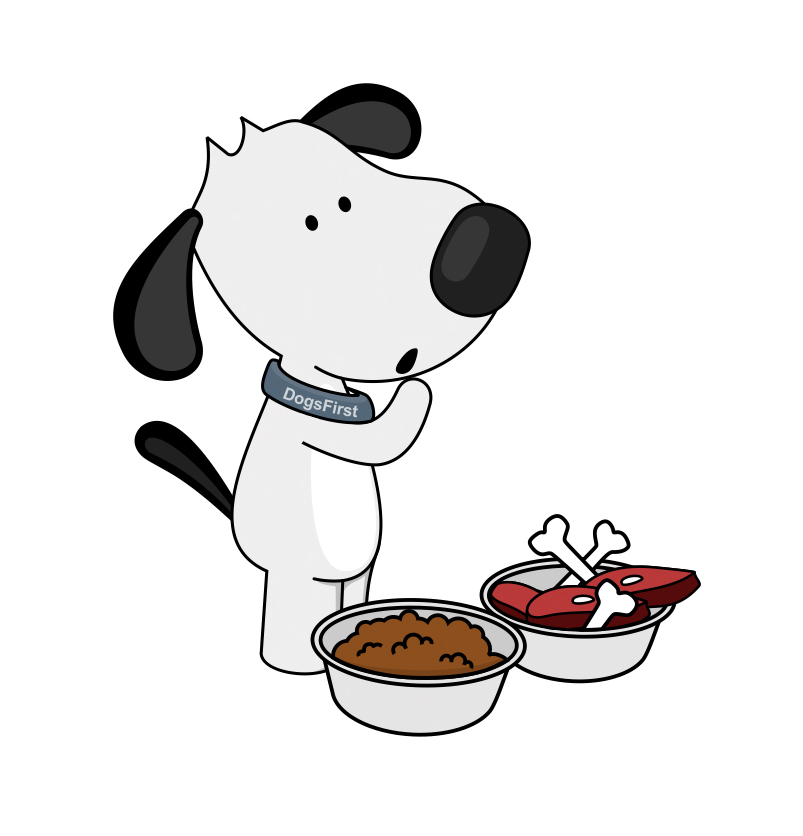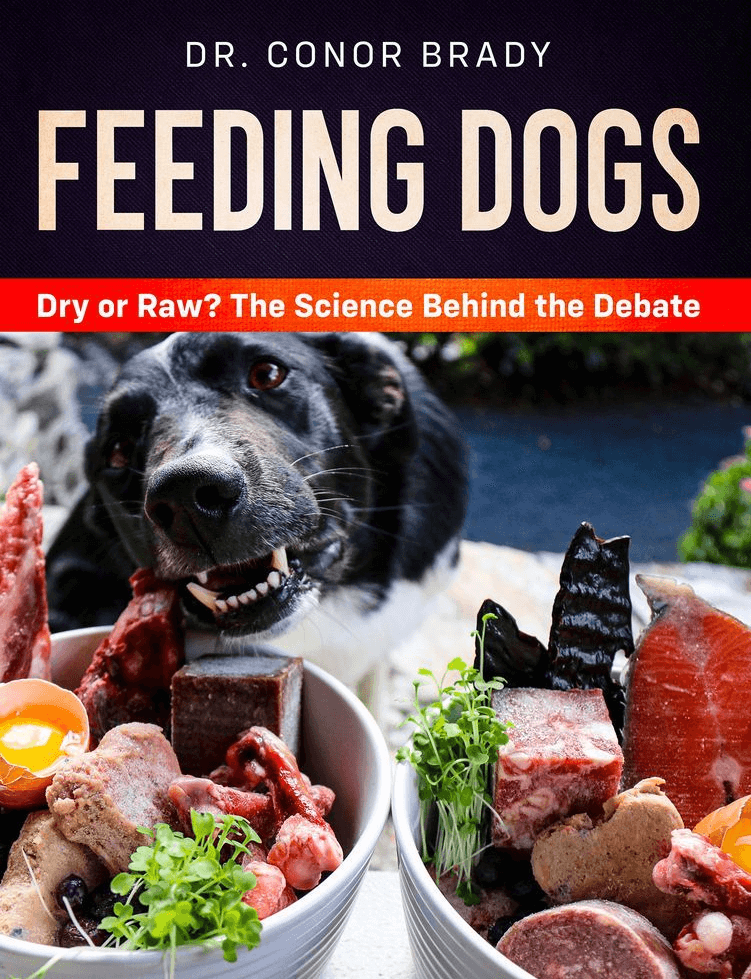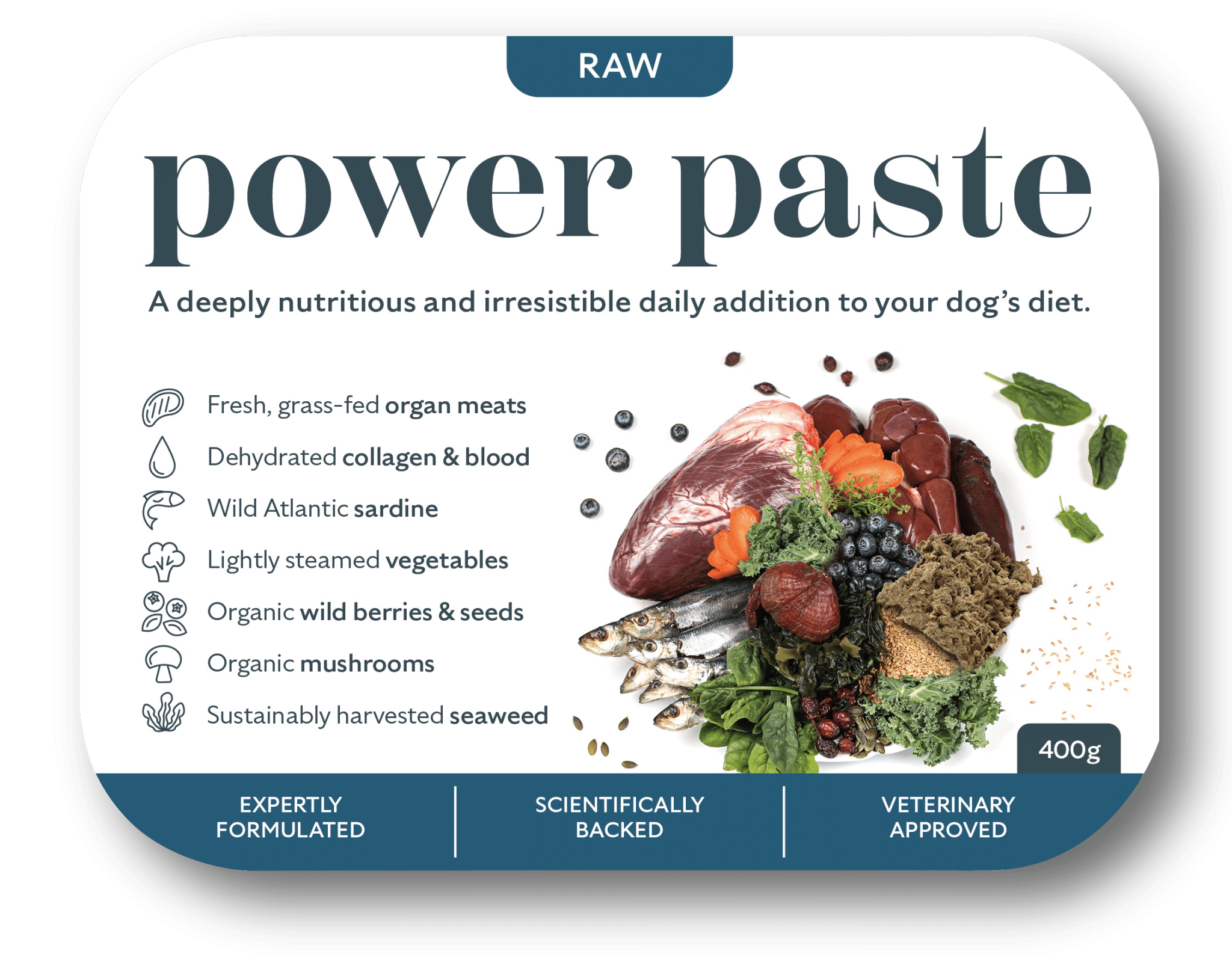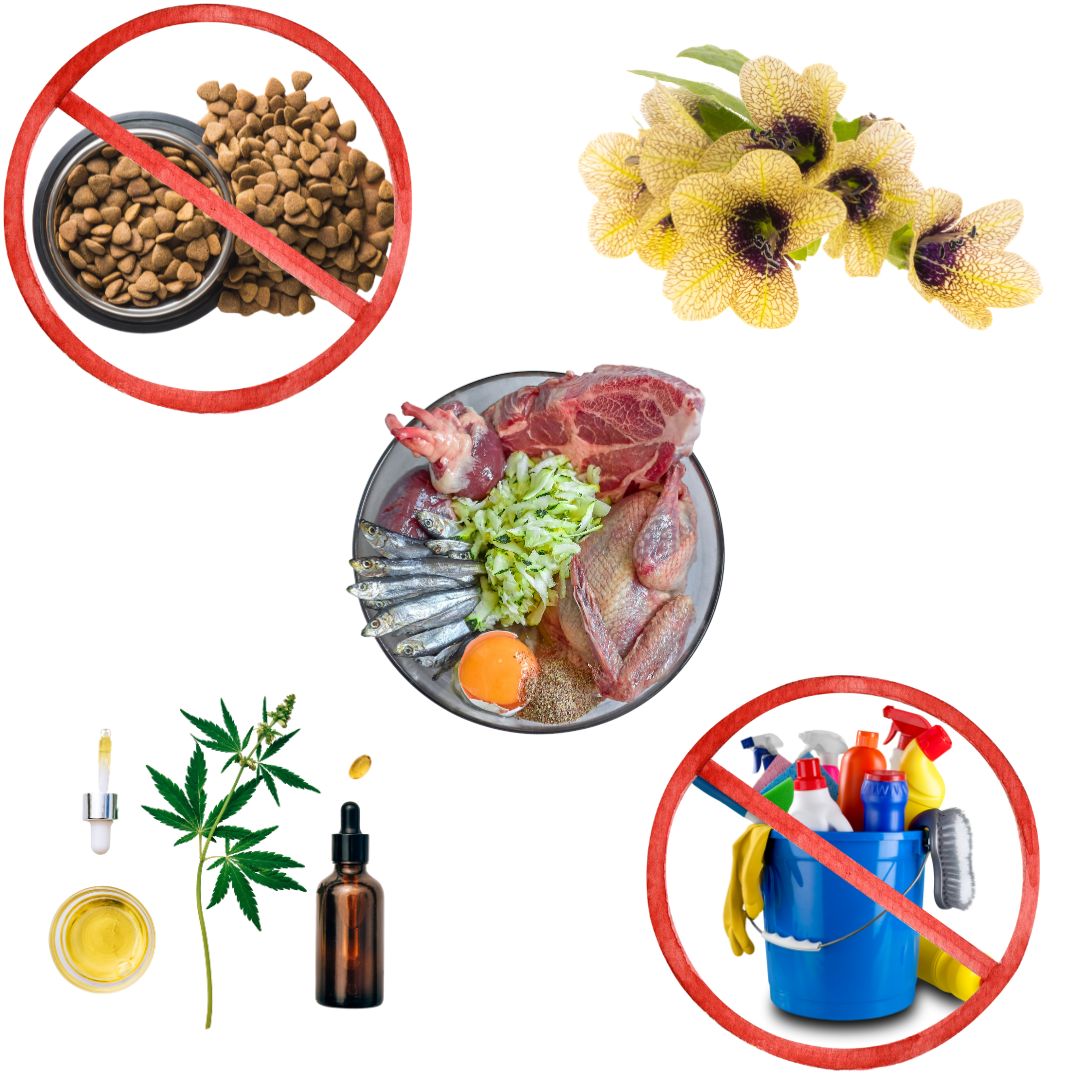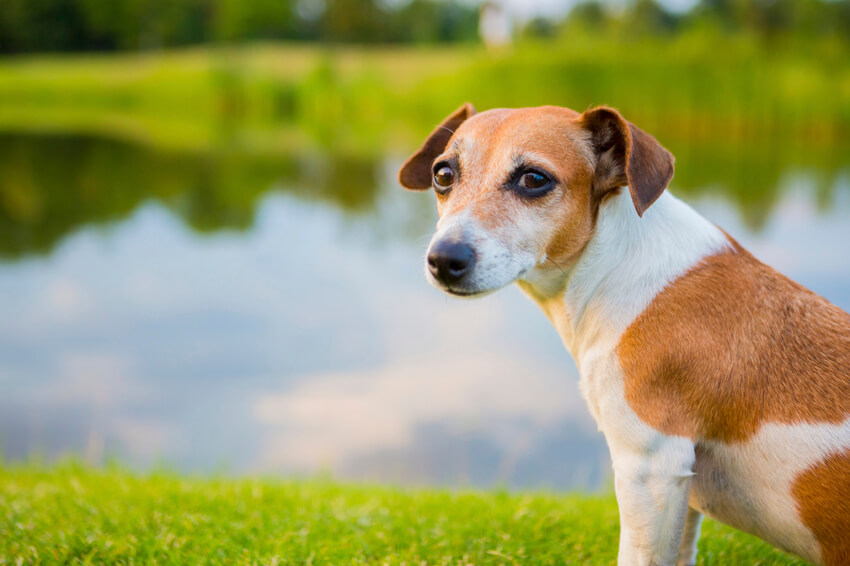In veterinary circles, the jury is still out on why so many pets today are suffering from kidney disease. Cats are twice as likely to get kidney disease than dogs (Veterinary Medical Database, University of Purdue) which largely rules out a genetic cause.
If genetics were solely to blame, then dogs should suffer more than cats, as they have been isolated into smaller gene pools than cats. The fact that cats are more prone to the illness than dogs, suggests that an environmental factor is most certainly involved.
The biggest environmental factor by far is ultra-processed, cereal-based pet food.
This series on kidney disease in dogs has been split into four separate articles:
- Article 1: An overview of kidney disease in dogs
- Article 2: Why dry food causes kidney disease (this article)
- Article 3: Why low protein dry food goes directly against the available science on kidney disease in dogs
- Article 4: The best diet for dogs with kidney disease
Diet and kidney disease in dogs
Diet plays an enormous role in the health of your dog’s kidneys. In part one, we learned that the kidneys are the body’s filtration system and the impact of what we feed our dogs can have on their kidney health. In this article, we are going to break down the how and why ultra-processed, dry, cereal-based food is going to potentially cause and fuel kidney problems in dogs.
Top 8 reasons why dry food causes kidney failure in dogs
1. A dry food diet is void of water
Water is essential for kidneys and a diet void of water for CKD patients goes against every principle in the book. The very nature of the disease demands that lots of water is passed through the kidneys. There is nobody in human medicine or nutrition who would recommend a dry diet, with zero moisture, for kidney disease sufferers, yet pet food manufacturers and (sadly) vets do, which is a disaster for our pets.

Cats, with their lower thirst drive, are more prone to kidney disease than dogs (largely due to struvite crystals). Studies show cats produce smaller amounts of concentrated urine, “and this may be particularly marked when they are fed dry (extruded) diets” (Burger et al. 1980; Gaskell 1985), than we see in dogs (Stevenson et al. 2003)
Based on fundamental principles, increasing the urine volume for a given solute load should decrease the level of saturation and hence the risk of crystalluria (Hawthorn and Markwell 2004).
Urine volume is determined to a large extent by water intake, so increasing water intake should result in an increased volume of urine that is further diluted, and an increase in the frequency of urination. As the authors conclude “…increasing the water intake showed clear benefits in studies of human urolithiasis”.

Stevenson et al. (2003) found that by increasing dietary moisture in Schnauzers and lab retrievers, there was a significant increase in the total moisture intake and a reduction in the urine-specific gravity. It also led to a reduction in oxalate and calcium oxide formation. All in all a bonus for the kidneys!
2. High cereal (carbohydrate) diets are directly linked to struvite crystal formation
High-starch diets stimulate the formation of struvite crystals in cats (Funaba et al. 2004) while high-protein diets have the ability to increase the solubility of struvite crystals in cats (Funaba et al. 1996).
Too much carbohydrate promotes struvite crystal formation and kidney disease in dogs. Calcium oxalate stones and their evil twin struvite crystals are proven to be a result of a high carbohydrate, cereal-based diet. Stones have been found, in research, to be caused by pet food companies’ acidic dry pet food.

A high carbohydrate diet alkalises your pets’ urine which can cause struvite crystals in their bladder, preventing them from passing urine. To counteract this, pet food companies began acidifying their products. Acidifying pet food has been linked to an increase in calcium oxalate stones which can cause kidney failure (largely in cats).
Carbohydrates lead to high blood sugar levels. Constantly high blood insulin levels (which balance soaring blood sugar) are strongly linked to kidney disease in humans. Carnivorous dogs living on a diet of 50% carbohydrates are expected to suffer, at the very least, the same as humans from this.
3. Grain mould is linked to kidney disease in dogs
Grain is the enemy of your dog’s kidneys. Ochratoxin (OTA) is produced by moulds (Penicillium and Aspergillus) and these are well established to affect kidney function. These moulds are common not only on the ingredients used in dry food but also on finished products as soon as the bag is opened. In a study of 26 canned foods and 17 dry pet foods, OTA was detected in 47% of the samples (Razzazi et al. 2001).

Mould is disastrous for kidneys
4. Dry food contains excessive levels of salt
Dry Dog and Cat food salt levels begin at 1% and Salt Destroys Kidneys
Excess salt reduces the kidneys’ ability to suck in water. This results in higher blood pressure, due to the extra fluid and strain on the delicate blood vessels leading to the kidneys (as well as causing all the cardiovascular diseases).
The level of salt in dry dog food starts at 1% (NaCl), the same salt content as seawater. The average labrador requires 1g of salt per day for normal function (NRC 2006). If a labrador is fed 500g of dry food containing 1% salt, then they are consuming 5 times their RDA of salt in every single meal.

This figure multiplies to ten for puppies. Unless dogs are spitting salt out of their noses like marine iguanas, this is very bad news for struggling kidneys. Dry food companies recognise this and so sell reduced sodium dry food for when the problem sets in, which is nice of them.
5. Dry fed dogs suffer from more immunological stress and immune reactions
Dry-fed dogs are shown in the trial, by the largest veterinary laboratory in the world (ANTECH 2003), to undergo significantly more immune reactions than fresh-fed dogs (largely due to wheat gluten but also cooked proteins and food chemicals).
They’re also shown to undergo significantly more immunological stress (University of Helsinki). This means more immune debris needs to be cleared by the kidneys of a dry-fed dog each day. Antibodies cling to antigens, and make their way to the kidneys, to be excreted. If these arrive in great numbers they clog up the filtration highway at the kidneys. These traffic jams cause damage to the kidneys.
That is why it is necessary to avoid infections when a dog is suffering from kidney disease.
6. Periodontal Disease – A real issue with dry fed dogs
Nine out of ten dogs are dry fed and nine out of ten dogs have periodontal disease by three years old. Periodontal disease is linked to kidney disease in dogs.
We know that bad gums are linked to kidney disease in humans. Gum disease is a constant threat to the immune system. Due to it, bacteria pose a constant threat to the body through the body’s capillary-rich gum line. This means patients with kidney disease have a constantly aroused and engaged immune system fighting back the daily threat.
Not only do bacteria get past the defences and lodge in kidneys but the constant battle creates an enormous amount of immuno-debris, which must be cleaned up by the kidneys, every day.

7. Cooked meat is hard to digest and is antigenic to the body
Dogs are carnivores. As such, they thrive when they eat lots of fresh meat.
Now all they are offered (via dry food) is a token, often twice-cooked meat derivative.
Dry food is a heavily processed, cooked meal.
Cooking meat protein results in proteins cross-linking, making the protein tougher as a whole and more resistant to digestion (think of chewing on that over-cooked piece of steak).
Enzymes in the meal (cells that normally aid with digestion) are obliterated by cooking, as are prebiotics and probiotics that would normally feed micro-flora (which assist in food processing and digestion in the gut).
Unsurprisingly Stroucken et al. (1996) found cooking during the extrusion of dog food pellets reduced the digestibility of protein in the pellet.
Cooked meat is shown to greatly reduce Glomerular Filtration Rates of kidneys, which is not good news if they are in trouble.
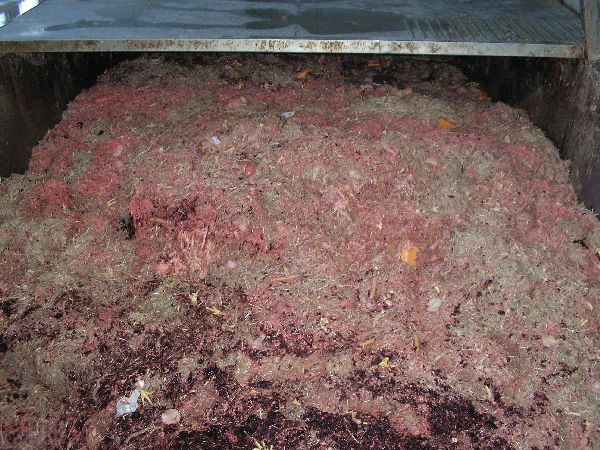
Partial digestion of the protein results in half-digested protein strands hanging around the system. The immune system around the gut doesn’t tolerate strange, little proteins as they might be baddies, so an immune reaction kicks in. This ultimately results in dogs experiencing “chicken” and “beef” allergies.
Imagine that?
It should be like a cow being allergic to grass, but it’s a casually accepted quirk in the modern (dry-fed) dog. The kidneys must clear all of this immune debris away at every single meal
8. Dry food contains many chemicals and additives
Dry food is packed full of chemicals that must be filtered by the kidneys. Have a look at the ingredients on a dry food/dental product pack. Remember the saying “if you can’t pronounce it you probably shouldn’t eat it”?

My book is packed full of studies on this very subject!
Dry food by necessity contains preservatives and colourants. It contains anti-caking, curing, drying, firming, oxidising, reducing, pH control and surface active agents, not to mention synergists, texturisers, emulsifiers, humectants, and stabilisers to control the exact texture of the pellet. All of these need to be filtered out by the kidneys.
Alongside dry food – these two factors can cause kidney disease in dogs
● Excessive Vaccination
Over-vaccination of pets is suspected to be linked to kidney disease. Anything that provokes the immune system must be cleaned up by the kidneys, and boosters are the most immune-system provoking chemical of them all.
Not only do they introduce a small amount of disease to a dog which riles the immune system (and a dog receives 7 diseases at once) but the adjuvants (the rest of the chemicals that make up the shot and help it work) need to be removed by the kidneys too, a double whammy for the kidneys. I strongly advise you to consider blood titres for your pet.

● Chemical parasite preventions/treatments hammer the kidneys
Then there is the apparent necessity to bombard animals, with no parasites, with extremely harsh chemicals each month “to protect them from parasites”.
Think about it, when was the last time you put a chemical drop on your child’s neck to stop them from getting head lice?
Never, of course, as you tend to deal with head lice when they get them. Same with fleas and worms.
Find out why I hate chemical flea control in dogs. More can be found on this in our articles on Natural Flea Control in Dogs and Natural Worm Control in Dogs. Also please learn more about the scam that is annual boosters for viruses in dogs (oh, and check out our kennel cough in dogs article!).
Conclusion
So there you have it, folks, all the reasons right there to stop feeding your dog a highly processed, cereal-based dry food, get them off all of those chemical parasite preventions and no more boosters. Fresh food will not only assist in preventing your dog from getting kidney disease but in the early stages, can help to slow down the progression (more on tweaks and changes to diet in the later stages of the disease in part 4)
Now that you know the cause of kidney disease in dogs, let’s take a look at how wrong a dry, low-protein, ultra-processed diet is for kidneys in part 3.
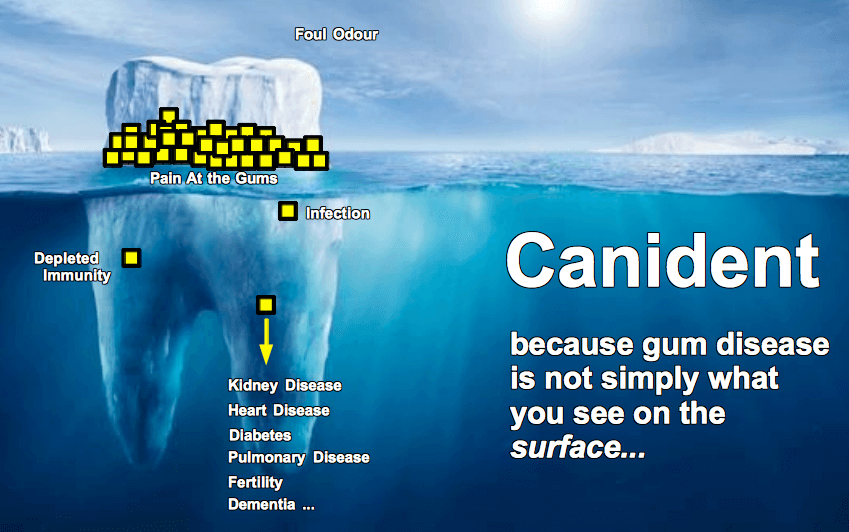
FAQ
● What do the kidneys do?
The kidneys regulate blood pressure, water consumption in the blood, blood volume, PH levels and chemicals such as phosphorus, potassium and sodium, ensuring these are kept in balance. Calcium and vitamin D levels are also regulated by the kidneys.
They filter out waste products, keeping the blood clean and able to do its job. They also filter out excess toxins/drugs and any debris from the constantly active immune system. All of the extracted waste is excreted in the urine. Kidneys, in a nutshell, are the body’s filtration system. (link to part one)
● Should I feed a low protein diet to my dog with kidney disease?
Studies show dogs thrive on high protein diets (Robertson et al. 1986, Bovée 1991, Finco et al. 1994, Hansen et al. 1992, Laflamme et al. 2008). In fact, their ability to process the protein is so efficient, that prior to feeding them the high-dose protein diets, many of the studies authors cited above actually removed 75% (and as much as 90%) of the kidney function in healthy dogs (by chopping off supply to the rest of the organ), to replicate chronic kidney failure.
All these studies unequivocally prove that dogs with CKF can safely deal with and do better on higher protein diets than on low protein dog food. At the end stages of kidney disease, tweaks may need to be made to lower the level of protein fed – Much more detail on low protein for kidney disease in part 3.
● What should I feed my dog with kidney disease?
Fresh, fresh and more fresh, real food! We have learnt from this article what foods you shouldn’t feed your dog with kidney disease and foods to avoid it happening, so to know more about what you should feed, go to part 4!

Consult for Your Dog’s Kidney Disease
If your dog has kidney disease and you would like to know more on how to help support them with good nutrition or you would simply like some assistance with making that switch to real food, we offer consults and we’d love to help you and your dogs.
Part 3 – why low protein diets are NOT recommended
Part 4 – the ideal diet and supplements for a dog with chronic kidney disease
References Used
Gaskell, C. J. (1985) Feline urological syndrome: a United Kingdom perspective. Feline Medicine: Proc. Seminar Eastern States Veterinary Conference, Orlando, pp. 27–32. Veterinary Learning Systems, NJ.
O’Neill, D.G., Elliott, J., Church, D. B., McGreevy, P.D., Thomson, P.C. and Brodbelt, D.C. (2013). Chronic Kidney Disease in Dogs in UK Veterinary Practices: Prevalence, Risk Factors, and SurvivalJournal of Veterinary Internal Medicine, 27:814–821
Sosnar, M. (2003). Retrospective study of renal failure in dogs and cats admitted to University of Veterinary and Pharmaceutical Sciences Brno during 1999–2001. Acta Veterinaria Brno, 72:593–598.

